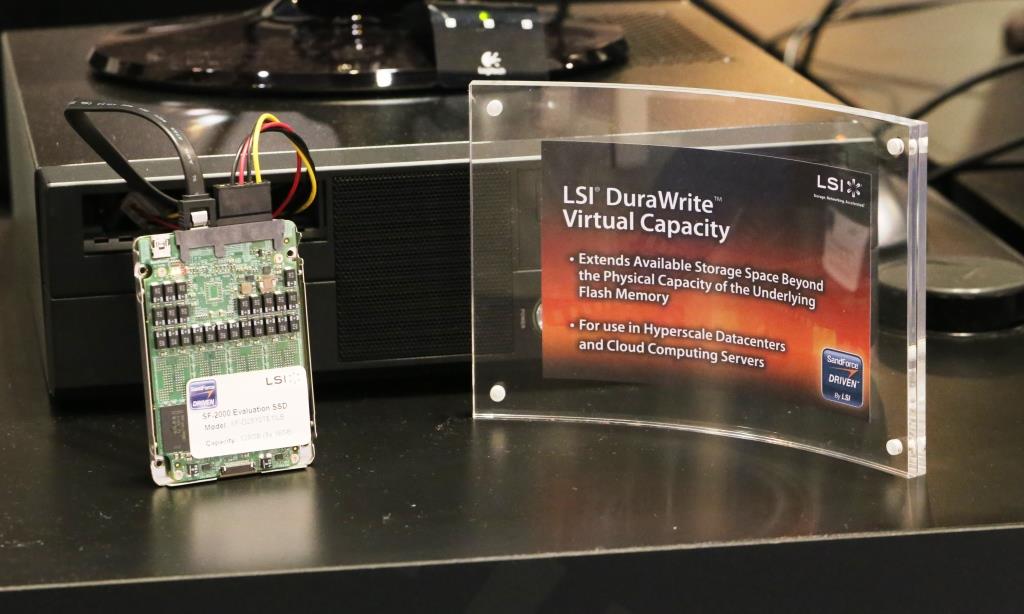LSI SandForce has definitely been busy as of late as we learned of their 3rd gen controller at Computex, their new SHIELD advanced error correction that increases SSD life significantly and they were the first to display Toshiba’s A19 memory functioning in a LSI SandForce SSD. Next up is something that even we never expected and it goes by the name of DuraWrite Virtual Capacity (DVC). DVC actually has the ability to increase available capacity of the SSD to the end user by as much as 3x. In laments terms, it is entirely possible to store 360GB of information on a 120GB SSD, depending on the type of data stored.
This can only be done in LSI SSDs as they use compression in their storage and, as much as it might be intended for new generation controllers, this demo was being done on the SF-2000. A bit disappointing is that, although it can be used on the SF-2000 and todays LSI SandForce SSDs, it is not intended for the consumer and is meant specifically for hyperscale data centers and cloud servers.
Similar to original DuraWrite technology where DuraWrite typically gave space back to overprovisioning when storage was complete, it has now directed it to provide that space to the end user’s capacity. In this live demonstration example above, the blue line is the physical capacity where the red line is the physical capacity used and the green is the virtual capacity used. Still not convinced? Let’s make it easier with simple Window’s Volume Properties:
Taking a look at this chart where the physical SSD is a 120GB capacity, you will see that there is presently 175GB of physical data stored with 62GB still available bringing the present total to 238GB of available capacity. Believe it or not, when more physical data is stored (if its highly entropic), the total available capacity will actually increase.
 The SSD Review The Worlds Dedicated SSD Education and Review Resource |
The SSD Review The Worlds Dedicated SSD Education and Review Resource | 


Interesting but I guessing there wouldn’t be near as much room with incompressible data such as video . Ofc data centers probably don’t handle much video. What are all the little black components at the top of the PCB?
Still can’t believe the SF-3000 was a no-show…bummer.
Capacitors likely. They look polarized. SSDs need cap banks for power holdup, so they can dump the tables during a loss of power
Plus decoupling and other uses
I wish LSI would release this for consumer SSDs too. This is the kind of stuff we need increase competition.
Notice the SSD in use…not your average run of the mill package. When I spoke with the team, they stuck to the fact that this is specifically geared towards hyperscale datacenters and cloud computing specifically because of the workloads.